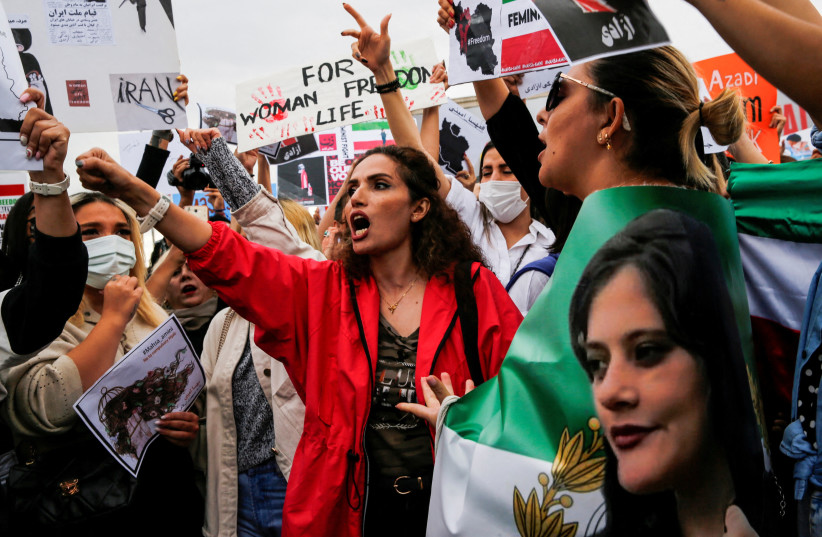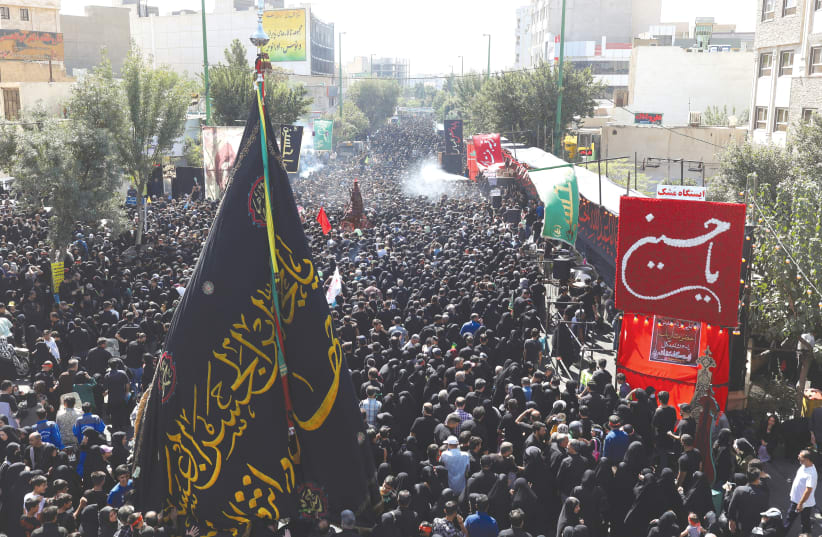The Iranian people have been protesting against the Islamic regime in their country for more than three weeks, with a clear and united message: we demand regime change.
Unlike previous protests, people from nearly all classes of society are united in calling for a change to the entire system of government. In response, the regime has brutally attacked the people, arresting, beating, raping and killing protesters. But this article isn’t about the horrors of the Iranian regime, it’s about the abysmal failure of the international media to expose those who are actively working against the protesters in Iran at the behest of the Iranian regime.
International media's failure to expose those working against protesters in Iran
For weeks, mainstream networks in English and other languages have been interviewing regime reformists, such as Trita Parsi, cofounder of the Quincy Institute and founder of the National Iranian American Council (NIAC) – the Iranian lobby in the United States. This lobby is not merely a group that advocates for Iran-US relations but an active body of the Iranian regime whose objective is obscuring and whitewashing human rights violations and crimes against humanity that are committed by Ayatollah’s regime in Iran. Their approach is to admit reforms are needed while protecting the power of the Islamic regime. This is unacceptable and directly against the will of the protesters.
Even more disturbing, some of the Persian journalists within the West covering the protests are echoing the NIAC talking points, such as the New York Times correspondent Farnaz Fassihi, who had the audacity to pen a piece claiming the primary motivation for the uprisings in Iran was economic pressure and thus the logical solution is sanction relief. Her piece was understandably met with outrage and mockery in Persian across social media, as well as a protest by Iranians outside the New York Times office against her. However, she is far from alone.

The NIAC affiliates have been extremely active on social media trying to overtake the narrative of the Iran protests. Shortly after the protests began, the NIAC-associated activists and reformists (again, those advocating for changes but not regime change) began speaking about the protests being simply about forced hijab and advocating for reform. In one interview, an Iranian regime supporter without a hijab even claimed no to forced hijab but yes to the Islamic regime.
The most common talking point of the NIAC and Iran lobby in the West, however, is that sanction relief is the solution to the protests because the protests resulted from economic stressors. The NIAC mouthpieces, such as Negar Mortazavi, an independent journalist, Ellie Geranmayeh of the European Council on Foreign Relations (who also is conveniently an associate of Iranian foreign minister Mohammed Javad Zarif), and activist Hoda Katebi have all made statements about why sanction relief is needed right now. These voices have also been adamantly in support of an Iran deal. In Mortazavi’s case, her associations are so blatant that there is an entire hashtag of Persians calling her out for supporting the regime, #MortazaviWithMullahs.
These names are but a few of the dozens of NIAC and regime-affiliated professors, journalists and experts in think tanks in the West proliferating their talking points, which come directly from the world’s largest sponsor of global terrorism: the Iranian Islamic regime. In many cases, these activists and academics on US campuses are the same voices spewing propaganda against Israel.
The NIAC has been vociferously anti-Israel and antisemitic, accusing US leaders of working on behalf of Israel publicly. They have also donated to the campaigns of notoriously anti-Israel members of US Congress Rashida Tlaib and Ilhan Omar. Omar even received an award from the NIAC and has consistently called for removing sanctions on Iran, while simultaneously supporting boycotts and sanctions against Israel.
At the student level, the former editor of Princeton University’s paper, Sarah Sakha, is a NIAC activist and a vocal anti-Israel persona. Another activist, Alex Shams, who once was the president of USC Students for Justice in Palestine, has been active in BDS activities on US campuses, including USC, Harvard and the University of Chicago, all while promoting the Iranian regime’s talking points. He was also part of the NIAC’s controversial See You in Iran program, launched with approval from the IRGC itself. The program, led by the NIAC activist Navid Yousefian, brought foreigners to Iran to whitewash the regime.
While it’s true the sanctions pose problems for Iranians, the idea that the core issue in the protests is sanctioned is patently absurd. Even if sanctions are removed, with the Islamic regime in power none of that money will go to the Iranian people but will end up in Syria, Yemen or Gaza in the hands of terrorists or perhaps in the foreign bank accounts of regime insiders. This is the real reason the NIAC and its activists are lobbying for it so aggressively.
The truth is that rich, poor, young, old, educated and uneducated are all protesting in the streets of Iran with one common goal: an end to this Islamic regime. The problem isn’t just forced hijab but lack of free speech and expression, lack of due process, extrajudicial killings, funding of global terrorism, gender apartheid and more. To minimize the protests being merely about hijab or about economics is a slap in the face to those who have already given their lives in this fight.
Despite the media’s failure to expose the true face of the NIAC and its efforts, the people of Iran have harnessed the power of social media for good (yes, every once in a while this happens) and they are successfully getting the attention of internationally known celebrities, such as Ariana Grande, Angelina Jolie, and Kim Kardashian.
Additionally, Iranian dissident voices in the West have used social media or organized powerful protests globally, the most notable of which being Hamed Esmaeilion in Canada, who nearly single-handedly coordinated protests against the Iranian regime in over 150 cities on October 1. Esmaeilion lost his family in the PS752 plane attack, in which the Iranian regime shot down a passenger plane. Since then, he has dedicated his life to exposing the true face of the regime.
Millions of people around the world have spoken up but the international media and those on social media also are obligated to call out the regime’s (and the NIAC’s) hijacking of the narrative as their version of reform. There is no reforming the Islamic Republic and anyone claiming otherwise is knowingly or unknowingly serving the regime.
The writer is a journalist, digital marketing expert and a human rights activist
